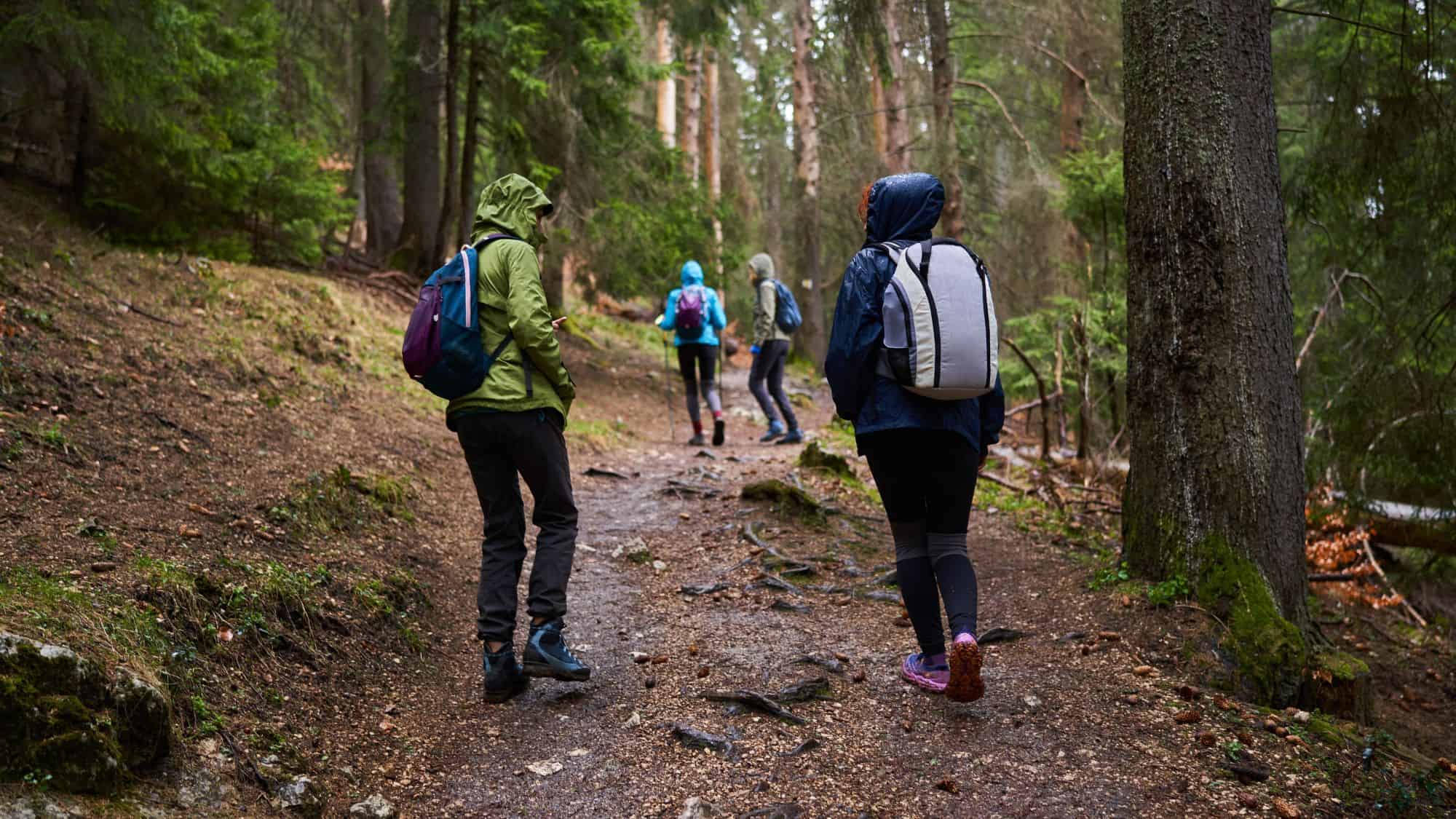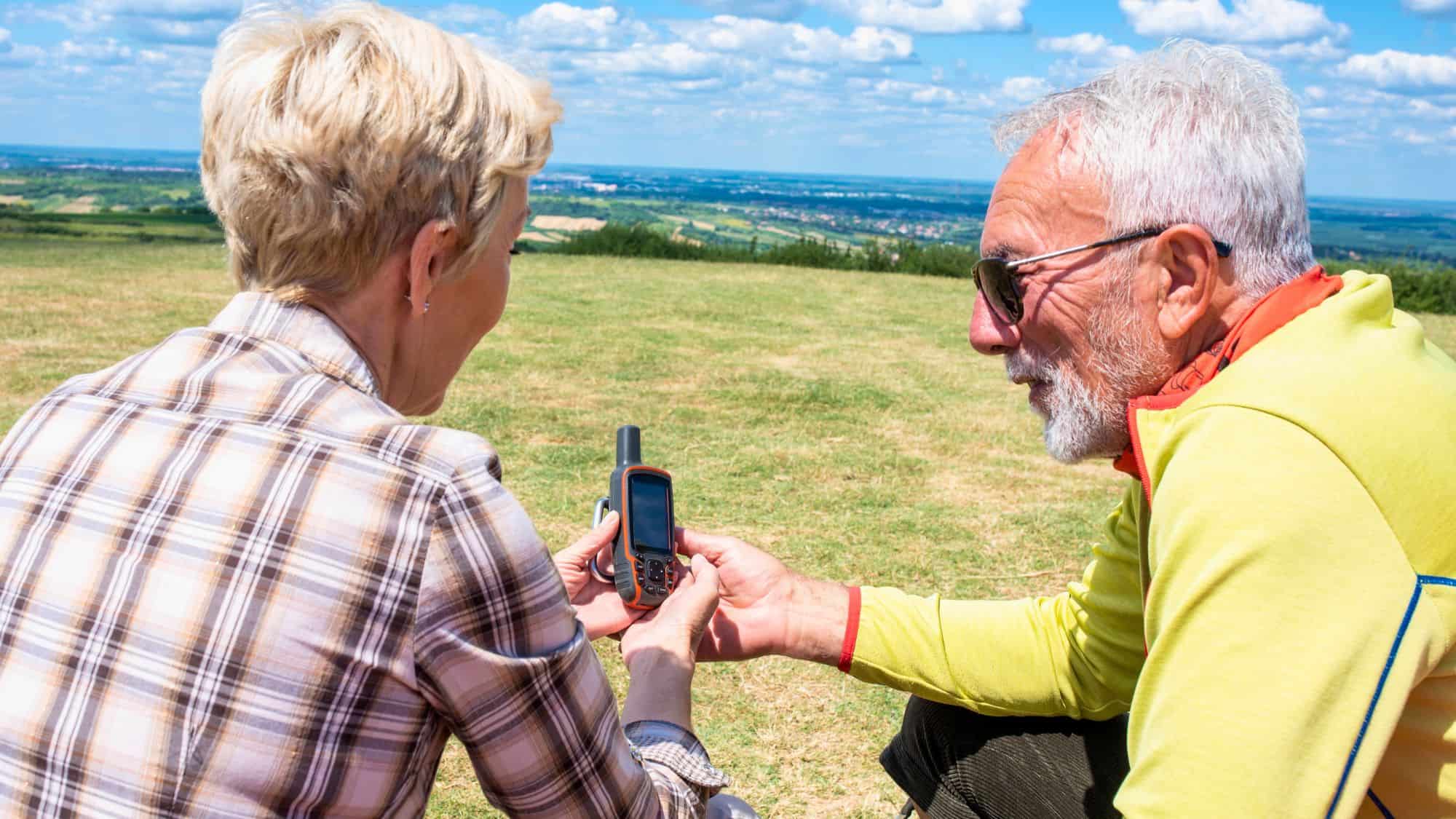Discover Parks & Wildlife contains affiliate links and is a member of the Amazon Services LLC Associates Program. If you make a purchase using one of the Amazon links, we may receive compensation at no extra cost to you. We may also use select AI tools to support our creative process, but all content is reviewed, refined, and finalized by our human team. See our disclosure policy and our AI use policy for more information.
12 Essential, Low-Stress Nature Travel Tips For Retirees’ Comfort And Safety
There’s a certain peace that comes with walking at your own pace, when every sound and scent in the open air feels unhurried. Morning light slips across water, the faint crunch of gravel marks each step, and time stretches in a way it never does indoors. The natural world invites you to slow down, to notice the flicker of wings above or the cool shade drifting across a trail. For those who’ve earned this quieter season of life, travel becomes less about distance and more about ease—finding places that soothe instead of strain, paths that let you wander without worry. Comfort, safety, and curiosity can exist side by side when the rhythm of the day is gentle and your needs are met with care. In this space, movement feels effortless, not demanded, and the reward is simply being part of the landscape rather than racing through it. Nature doesn’t ask for speed; it asks for attention. And when we give it that, even a short walk can feel timeless. Let’s take a look at a few tips that make outdoor travel safer, smoother, and deeply enjoyable for retirees seeking peace in every step.
Choose Gentle, Scenic Trails First

Ease into outdoor travel by selecting trails that offer beauty without the strain. Many nature preserves, arboretums, and park loops have routes graded as “easy” or “accessible,” often less than 2 miles each way with clear footing.
These paths allow you to keep balance while still feeling close to nature’s quiet rhythm. Boardwalks through wetlands, paved canyon edges, and forest roads converted into walking trails make ideal starts. Some trails include benches or rest points at regular intervals, though spacing varies.
Early mornings bring softer light and fewer crowds. Carry a simple map or snap a photo of the trailhead sign before beginning. When you find a spot with steady footing, take time to pause and enjoy the sound of the wind through the trees or water nearby. Choose shaded routes in warm months and sunny paths in cooler weather to maintain comfort.
The key is not how far you walk but how easily you can enjoy what’s around you. If a trail feels smooth underfoot and keeps your breathing easy, it’s the right one for now. Return to it in another season and the same path will feel new again.
Respect Altitude, Heat, And Cold With Clear Limits

Altitude, temperature, and weather shifts can test comfort quickly, especially for older travelers. Start any high-elevation trip (anything above 5,000 feet) by resting your first day and drinking plenty of water. Dry mountain air and thinner oxygen can leave you lightheaded, even on flat trails. So move slowly, and if fatigue comes early, shorten the route rather than push through.
Heat demands equal respect. In summer regions, begin walks before 8 a.m. and finish by noon, when temperatures stay under 80°F. Carry electrolyte packets or fruit for balanced hydration. On cold days, pack gloves and a windproof layer, as wind chill near lakes or open ridges drops fast after 3 p.m. In extreme cold, limit time sitting still; move gently to keep circulation steady.
Always know your personal limits: if your pulse races or breathing feels tight, rest in the shade and reassess. Locals often say, “Downhill solves most problems,” meaning that returning to lower altitudes usually restores comfort.
Pack Layers For Swinging Temperatures

Nature’s thermostat rarely holds steady. Even in mild regions, temperatures can swing 15 to 25°F from morning chill to afternoon warmth. Packing layers means you stay adaptable and relaxed no matter the shift.
Begin with a moisture-wicking base that keeps skin dry, then add a light fleece or soft wool for insulation. A wind jacket or compact rain jacket completes the trio. And each piece should fold easily into a small daypack.
Even in warm climates, a thin long-sleeve shirt protects skin better than constant sunscreen reapplication. Cold hands and sunburned necks are common complaints, and light gloves and a wide-brim hat solve both. Avoid heavy cotton; it traps moisture and chills you once temperatures drop. For extra comfort, pack a lightweight scarf or buff. It doubles as sun protection or warmth around the neck.
Many seasoned travelers roll clothes instead of folding; it saves space and keeps items easy to grab inside your day pack when the weather turns. At the end of the day, layering is not only about warmth; it’s about peace of mind. When you’re dressed for change, the day feels open, not uncertain.
Keep Medications, Documents, And Contacts Organized

Organization brings confidence, especially far from home. Before each outing, place daily medications in clearly labeled pouches, divided by time of day. Waterproof cases protect pills from humidity and sudden rain. And always carry a printed list of prescriptions, dosages, and allergies in your wallet or daypack, because phones can lose charge or signal. Include emergency contacts and insurance details.
Keep duplicates of these documents in your luggage or hotel safe. If traveling through time zones, adjust dosage schedules over two days rather than all at once to stay balanced. Add a small first-aid kit with adhesive bandages, antiseptic wipes, and pain relief tablets that fit easily beside your medication.
Consider storing one extra day’s supply of essentials in case of travel delays or lost bags. When flying, always carry medication in your personal item rather than checked luggage. And for longer road trips, store refills in a cool, shaded section of the car.
Use Trekking Poles, Braces, Or Lightweight Mobility Aids

Support gear often means the difference between cautious steps and confident movement. Trekking poles are excellent for balance and can reduce impact on knees by up to 25% on descents.
Choose adjustable poles with ergonomic grips and shock absorption for smoother handling. Practice on local paths before your trip so the motion feels natural. On uneven trails, plant poles slightly ahead and opposite each step to steady your stride. And for added comfort, consider soft knee braces or ankle wraps, because these keep joints warm and stable without bulk.
Hiking staffs or compact walking sticks serve the same role for those preferring a single-hand grip.
Even short walks benefit from the extra balance support, especially on gravel or sand. Keep pole tips capped in fragile ecosystems or boardwalks to prevent damage. When flying, pack trekking poles in checked luggage, as most airlines don’t allow them in carry-on bags.
Hydrate Early, Eat Steady, Rest Often

Proper hydration and steady nourishment turn a long walk into a pleasant one. Begin drinking water before setting out; a half bottle before the first step helps maintain equilibrium. Then sip small amounts every 20 minutes rather than gulping it all down at once.
Carry two bottles per person, even on short trails; mountain or desert air dries you faster than you expect. Many experienced walkers mark refilling points on their maps before leaving, especially in dry regions where sources can vanish midseason.
Don’t forget to pair water with balanced snacks. Options such as nuts, whole-grain crackers, or cheese cubes help to keep energy stable. And a thermos of herbal tea works well in cool weather for warmth and hydration combined.
Rest every 30 to 45 minutes, ideally in shaded or breezy spots. Elevate feet on a small rock or pack during breaks to improve circulation. In summer, cooling towels or a quick dip of hands in stream water lowers body heat gently. Keep a small cloth for wiping sweat to prevent chills when breezes rise.
Protect Skin, Eyes, And Hearing Outdoors

Outdoor comfort depends as much on protection as preparation. UV exposure increases near reflective surfaces like snow, sand, and water, so sunscreen remains essential year-round. Apply a broad-spectrum lotion 30 minutes before stepping out and reapply every two hours.
Lightweight, long-sleeve shirts and wide-brim hats add physical barriers that outperform reapplications in long sun. Polarized sunglasses guard against glare and help spot trail edges more clearly. Carry a spare pair in case one breaks. In cooler months, a thin scarf shields both sun and chill.
For hearing safety, keep soft earplugs handy for windy overlooks or loud waterfalls. Those using hearing aids should carry spare batteries sealed in a dry pouch. And avoid sprays or lotions near your ears to prevent residue buildup. After hiking, cleanse skin with gentle wipes to remove salt and dust.
It doesn’t hurt to always keep a small bottle of aloe or soothing cream in your bag as well; it cools skin faster than you’d expect.
Learn Basic Navigation, Weather, And Trail Etiquette

Even on short trails, knowledge keeps outings smooth. Start by learning to read simple contour lines and direction arrows on trail maps; they show where grades rise or turn. Carry a printed copy, even if you rely on GPS on your phone, because dense forests and canyons can block reception. Mark your route mentally or with small notes in a pocket notebook if needed.
Always check daily forecasts twice: once before breakfast, again after lunch, since conditions shift fast in certain locations. If thunder rolls or clouds stack high, descend below ridgelines immediately.
Good etiquette adds to everyone’s peace: keep conversation low, yield to uphill hikers when descending, and step aside when faster groups approach. Avoid feeding wildlife; it changes their natural habits and endangers both parties. And a small whistle or flashlight in your pocket can become vital if daylight fades unexpectedly.
Locals sometimes post advice boards near trailheads (or check places like AllTrails). Read them carefully, as they reflect the latest conditions.
Plan Lodging For Quiet Nights And Easy Access

Comfort off the trail matters as much as comfort on it. Choose accommodations within 15 to 30 minutes of your day’s walking areas. That short distance reduces fatigue and lets you return easily for breaks or if the weather changes.
Single-level lodges, small cabins, or rooms on ground floors save effort when carrying gear. And ask about amenities like sturdy handrails, walk-in showers, and steady heating or cooling systems. These might not be a “must” but small features like these can make recovery easier.
In busy towns, request rooms facing away from main roads or lobbies for quieter nights. Many travelers find smaller inns more restful than large hotels, especially when mornings begin early. If your plans include multiple parks, choose one central base and make day trips outward rather than constant hotel changes.
Prioritize Supportive Footwear And Daily Foot Care

Feet carry every mile, so treat them as primary gear. Choose well-cushioned walking shoes with strong heel support and flexible soles. Break them in on short walks weeks before travel to prevent blisters. Insoles designed for arch support or mild pronation correction can transform comfort levels if needed.
Pair them with moisture-wicking socks like merino wool or synthetic blends. Never use cotton, which traps sweat. If conditions are hot, sprinkle a little foot powder before socks to reduce friction. After each hike, remove insoles and air shoes out in a shaded place to dry. Clean dirt from seams to preserve material life.
In the evening, elevate your feet for ten minutes or soak them briefly in warm water with salt to reduce swelling. Some travelers like to pack a second pair of lightweight shoes for evenings, giving their feet room to relax.
Travel With Trusted Companions Or Reputable Groups

Shared travel brings both safety and enjoyment. Companions help monitor pacing, notice fatigue, and make the day livelier. Choose friends who walk at a similar speed and share an interest in frequent pauses to enjoy the view.
If joining guided tours, read reviews and confirm group size. Smaller teams, usually under ten people, feel more personal and flexible. And the guides often handle permits, transport, and timing, so you can just focus on the surroundings and have an enjoyable day.
Always share your itinerary with a family member at home, including expected return times. For independent travelers, set daily check-in messages, as cell coverage often fades in valleys and forests. Before setting off, agree on meeting points in case someone moves ahead. One veteran tip: keep your group in visual contact near bends or thick foliage to avoid accidental separation.
Many regional walking clubs welcome visitors for easy routes, and joining them adds local insights and friendly conversation in an area you might not be as familiar with.
Build Flex Days And Backup Plans Into Every Trip

A relaxed itinerary keeps travel lighthearted. Include one rest or “flex” day between longer outings to handle weather shifts or simple fatigue. If rain arrives or energy dips, nearby scenic drives or visitor centers often fill the day beautifully without strain. Keep a list of alternative trails under 2 miles or quiet lakes within short drives; they become effortless substitutes when needed.
Having buffer days also allows time for small pleasures: a slow breakfast, a market visit, or watching sunset without hurry. Flexibility also prevents disappointment when closures occur, turning setbacks into discovery.
Schedule your final day with minimal obligations so packing and travel feel calm rather thran rushed at the end of a full day.
Experienced travelers say the happiest trips come from “planned looseness,” where time feels open but organized. By allowing space for change, you trade stress for serenity and often find that the unplanned hours become the most memorable of all.
Like Our Content? Follow Us on MSN (or click the Follow Button above) for more from Discover Parks & Wildlife.
15 Astonishing Natural Rock Formations That Defy Belief

Prepare to have your mind twisted like a pretzel as you explore mind-blowing rock formations that look like nature was inhaling sand and exhaling pure magic.
12 Volcanic Wonders You Can Actually Walk On

Take a stroll through a smoldering landscape that’s more than a little fiery. Who wouldn’t want to tiptoe across nature’s hot plates and feel like a contestant on a daring survival show where the ground could literally be lava?
12 Natural Wonders You Have To See To Believe

Get ready to have your mind spectacularly blown as you embark on a whirlwind tour of natural wonders so jaw-dropping that they’ll make your social feed look like it’s been all dressed up with nowhere to go.






